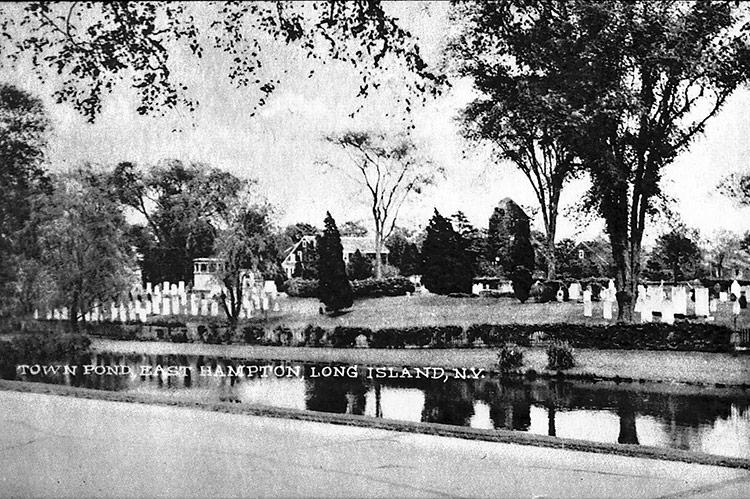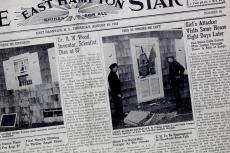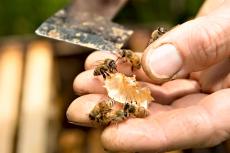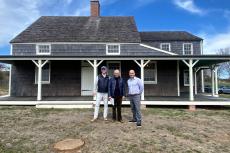The South End Burying Ground, shown in the postcard here, is the oldest graveyard in East Hampton and the final resting place for a number of well-known figures and families here. The section of land features so many elements of landscape, sculpture, and historical significance that it’s well worth a visit the next time you drive by.
The graveyard sits between Main Street and James Lane and across from the Gardiner Windmill (1804). Alongside it is Town Pond, a village focal point and pleasing sight for nearby residents and those passing by. Inside the cemetery’s fence are tombstones and monuments that date back as early as the 17th century. The oldest tombstone belongs to the Rev. Thomas James Jr. (1621-1696), the first pastor in East Hampton, who came to America from England in 1632.
The oldest burial is of Lion Gardiner (1599-1663), the first proprietor of Gardiner’s Island. His gravestone, however, is not the original from 1663. His sarcophagus was designed in 1886 by the architect James Renwick Jr., who also designed St. Patrick’s Cathedral in Manhattan. Many generations of the Gardiners rest within this graveyard.
Some other prominent figures who were laid to rest here are the artists Thomas Moran (1837-1926) and Mary Nimmo Moran (1842-1899), who had their studio nearby. A few feet away are Sara and Gerald Murphy, who were summer residents in the early 20th century. The Murphys were friends and patrons of many famous artists and authors of the Lost Generation, including Pablo Picasso and F. Scott Fitzgerald, who created works inspired by the couple.
An obelisk within the grounds memorializes the 33 crewmen who perished on the ship John Milton when it wrecked off the Montauk coast in 1858. Some believe that Elizabeth (Goody) Garlick, who was tried for suspected witchcraft in 1658, could be buried somewhere within the graveyard. Other well-known local surnames can be spotted among the graves, such as Mulford, Osborn, Conklin, Hedges, Huntting, and many others.
—
Mayra Scanlon is a librarian and archivist in the East Hampton Library’s Long Island Collection.




